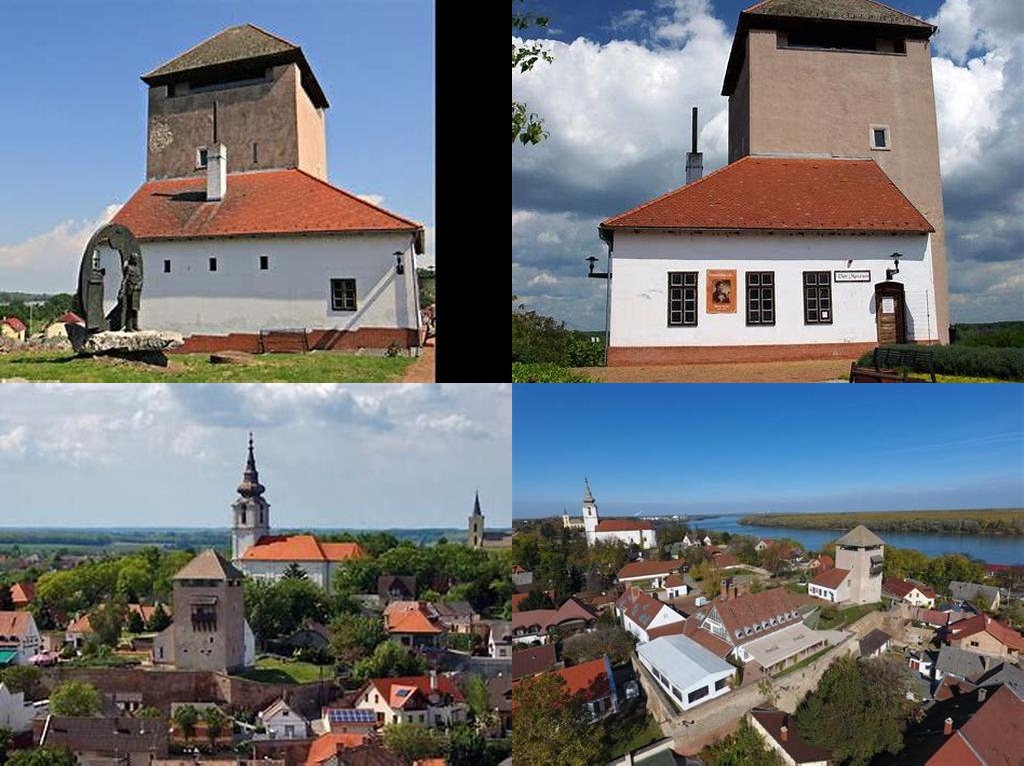
Dunaföldvár, a small riverside town that might otherwise slip under your radar, harbors a striking stone sentinel known as the Csonka-torony—the Truncated Tower. It’s hard to overstate the quiet magnetism of this lone tower looming at the edge of an ancient earthwork, gazing down at the swirling waters of the Danube and casting long shadows over both history and landscape. If you believe that ruins tell better stories than slick, manicured museums, then Csonka-torony should climb high on your itinerary.
Approaching the tower, you might not guess at its age or its original purpose. The stones don’t give up many secrets at first glance. But take a moment to squint at the architecture, and you’ll start to sense echoes of a distant, turbulent time. The locals will proudly tell you that Csonka-torony was raised in the late 15th century, when Hungary was a frontier between East and West, Christendom and Ottoman power. Probably erected as part of a now-vanished royal fortress, the tower’s main purpose was to guard the crossing at the Danube and keep watch for hostile armies. You’re not just looking at an old wall—you’re eye-to-eye with a relic of medieval borderland life.
It earns its curious name—Csonka-torony, which means “truncated” or “stubby” tower—rather literally. Centuries of war, decay, and indifference lopped off the top; the tower stands at about half of its estimated original height. For some, this incomplete form only adds to its poetic allure. Imagine invaders, whether under Suleiman the Magnificent or Habsburg banners, surging across the plain, the reduced but unbroken tower witnessing every advance and retreat. There’s a kind of defiant dignity in ruins—Csonka-torony isn’t trying to look pretty or impressive, it’s just weathered the ages because that’s what it does. Today, you can climb inside and imagine what soldiers in rusty armor must have felt peering out of the arrow slits, watching for any ripple of movement across the river.
And what a view that river is! Stand atop the tower (after climbing a slightly nerve-wracking spiral staircase, be warned) and you’ll be treated to sweeping vistas of the Danube, sprawling fields, and glimpses of red-tiled village roofs. For centuries, the river has been both lifeblood and threat, bringing wealth and destruction with equal ease. On misty mornings, you half expect to spot the silhouette of an Ottoman galley or a band of merchants drifting downstream. If you time your visit just right, you might even catch the soft gold of dusk glinting on the water, making the old stones glow as if holding onto memories.
There’s something irresistible about the honest, lived-in character of the area surrounding the tower. Unlike the more famous castle ruins of Hungary, Csonka-torony rarely draws big crowds. Walk around the base, and you might have the entire site to yourself—just the sound of the wind stirring in the grass, a stray cat slinking through the ruins, and your own thoughts for company. One of the rewarding things about visiting a place like this is the freedom to wander as you please; there’s no velvet rope, no plastic signage, nothing separating you from history except the imagination you’re willing to bring.
Signboards dotted around the structure provide snippets of backstory and local legend. Some say secret tunnels still run from the base of the tower to the nearby church, or even to distant hiding places across the Danube. Who knows? If you’re of an adventurous spirit, the slightly overgrown footpaths and mysterious shadowy corners will make you want to look for clues yourself. In the town below, you’ll find a few cafés and summer ice cream stalls—local grandmothers might regale you with tales of when Csonka-torony was a favorite backdrop for teenage dares and childhood adventures. There’s no pressure to hurry; the pace of life here is wonderfully slow. 🏰 You get the sense that both the tower and the townsfolk prefer things just the way they are.
Csonka-torony is also more than just a relic—it’s a stage for local culture. Occasionally, the tower hosts open-air concerts, medieval fairs, or nighttime storytelling sessions where children (and adults!) gather under the stars. If your timing is right, you might join a festive crowd within the ancient stones, laughter echoing up to rafters that once held the hopes and fears of long-ago soldiers.
For those who love old stones and good stories, Dunaföldvár’s Truncated Tower is a perfect detour. It’s a place to contemplate the mutability of time, the flow of the river, and the endurance of simple, sturdy architecture. Sit on the grassy slope with a slice of sweet lángos, gaze up at the stubby tower, and let yourself drift through layers of memory—both yours and the land’s. Come with an open mind, a little curiosity, and maybe a notebook for your own observations. You might just find that Csonka-torony becomes your own favorite chapter in the story of Hungary.





